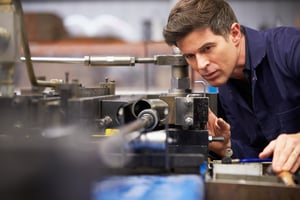Among the motivations driving new product design, the demand for more efficient and sustainable...
The Environmental Benefits of Using Copper in HVAC/R Equipment Applications
HVAC/R equipment plays a significant role in the environmental landscape, with both positive and negative impacts on sustainability.
HVAC/R systems contribute to comfort and well-being, yet their traditional configurations often have environmental drawbacks. The use of certain refrigerants in cooling systems has been linked to ozone depletion and greenhouse gas emissions, highlighting the need for greener alternatives.
Additionally, the energy consumption of HVAC/R equipment substantially contributes to overall carbon footprints. In recent years, the industry has been shifting focus towards more sustainable practices, emphasizing efficiency, reduced emissions, and the integration of new refrigerants and eco-friendly materials. This transition is crucial in mitigating the environmental impact of HVAC/R systems and aligning with global efforts to address climate change.
The pivotal role of small-diameter copper tubes underscores the significance of transitioning towards more sustainable HVAC/R options. These tubes offer a highly efficient and eco-friendly solution, contributing to the overall reduction of environmental impact.
Small-diameter copper tubes enhance system performance, facilitating greater energy efficiency and lower resource consumption. This transition aligns with the broader commitment to sustainability, promoting practices that address current environmental concerns and pave the way for a cleaner and more resilient future. By incorporating small-diameter copper tubes into HVAC/R systems, we take a crucial step towards meeting contemporary efficiency standards and environmental responsibility demands.

Decarbonization and Electrification
Decarbonization and electrification are foundational concepts in the quest for sustainable and environmentally responsible HVAC/R solutions. Decarbonization involves reducing or eliminating carbon emissions associated with energy production and consumption within buildings. Conversely, electrification centers on transitioning from fossil fuels to electricity as the primary energy source.
Incorporating copper tube-fin heat exchangers in HVAC/R technology for heating represents a significant stride toward advancing decarbonization and electrification.
Copper's exceptional thermal conductivity and corrosion resistance make it an ideal material for heat exchangers, optimizing the efficiency of the heating process. The enhanced heat transfer capabilities of copper contribute to the overall performance of these systems, promoting energy efficiency and reducing reliance on traditional, carbon-intensive heating methods.
Furthermore, the use of copper aligns with the broader trend of electrification, as it facilitates the seamless integration of electric heating within HVAC/R systems. This synergy between copper technology and HVAC/R applications improves the performance and lifespan of heating systems. It fosters a more sustainable and environmentally conscious approach to energy consumption and is a positive step in pursuing greener heating solutions.
Greenhouse Gas Reduction
Small-diameter copper tubes in HVAC/R applications are pivotal in mitigating greenhouse gas emissions. Many contemporary HVAC/R products employ refrigerants with high global warming potentials (GWPs), contributing significantly to environmental concerns. However, integrating advanced copper tube-fin heat exchangers has facilitated the adoption of low GWP refrigerants, aligning with sustainable practices. Copper is compatible with various refrigerants, including natural ones like propane (R290) and carbon dioxide (R744).
Small-diameter copper tubes are ideal for heat exchangers that use high-pressure refrigerants like R744. These tubes are durable and can operate at higher pressures while meeting all safety requirements. Additionally, R744 has a GWP of 1, making it an environmentally friendly and cost-effective refrigerant choice with minimal environmental impact. Furthermore, using small-diameter copper tubes proves instrumental in reducing the charge requirements for certain refrigerants, such as R290, which boasts a comparatively low global warming potential (GWP). This strategic utilization of small-diameter copper tubes enhances system efficiency and contributes significantly to the overall reduction of greenhouse gas emissions in the HVAC/R industry.
Heat Pumps and Coefficient of Performance (COPs)
Heat pumps emerge as a sustainable solution in HVAC/R technology, harnessing the principles of thermodynamics to transfer heat between indoor and outdoor environments efficiently. These systems exhibit eco-friendly attributes by utilizing ambient air, water, or geothermal energy, reducing reliance on conventional energy-intensive heating or cooling methods. Copper plays a crucial role in enhancing heat pump efficiency and performance.
The small-diameter copper tube’s durability and corrosion resistance make it well-suited for crucial components such as coils and heat exchangers. Real-world examples abound, showcasing copper's positive impact on heat pump applications. From residential heating to industrial cooling, copper's reliability contributes to the longevity and effectiveness of heat pump systems, promoting sustainability and energy efficiency in diverse settings. Small-diameter copper tubing enhances heat exchanger performance during a defrost cycle by facilitating rapid and efficient heat transfer. Copper's high thermal conductivity allows for quicker frost and ice removal, minimizing energy consumption and downtime during defrosting. The symbiotic relationship between heat pumps and copper underscores the crucial partnership driving the transition to greener HVAC/R solutions.

Efficient HVAC/R Systems
In pursuing more environmentally efficient HVAC/R systems, utilizing small-diameter copper tubes represents just one facet of a comprehensive approach. Beyond the evident benefits of high efficiencies and coefficients of performance associated with small-diameter copper tubes, various other technologies converge to foster more efficient operation of HVAC/R systems. Advanced control systems and intelligent sensors optimize energy consumption by dynamically adjusting settings based on real-time conditions, ensuring precise and responsive operation.
Additionally, innovations in compressor technology contribute to overall efficiency gains, promoting reduced energy consumption and environmental impact. Integrating sustainable refrigerants with lower global warming potential aligns these systems with environmentally conscious practices. This synergy of technologies underscores a holistic commitment to creating HVAC/R systems that meet high-performance standards and prioritize environmental sustainability in a rapidly evolving landscape.
Equipment manufacturers can reduce system costs and achieve higher energy efficiency using smaller-diameter copper tubes. This approach not only lowers the material cost by reducing the usage of tube materials, fin materials, and refrigerants, but it also results in a smaller overall system size. Additionally, smaller diameter tubes can operate at higher pressures, making them more effective in achieving energy efficiency. In this recent publication, you can read more about how and why smaller-diameter copper tubes are more efficient.

